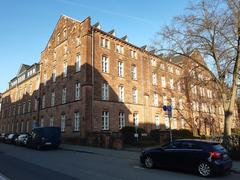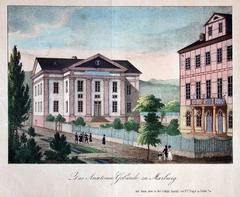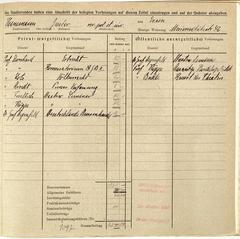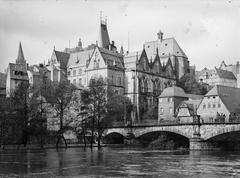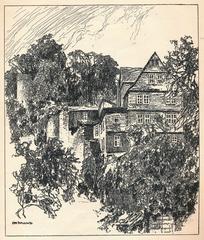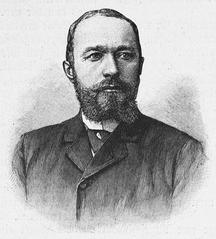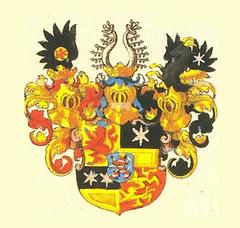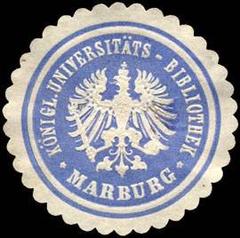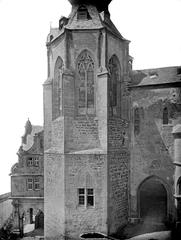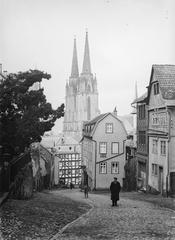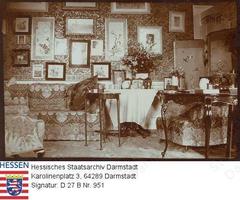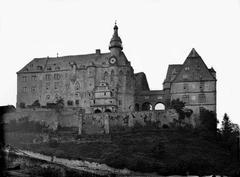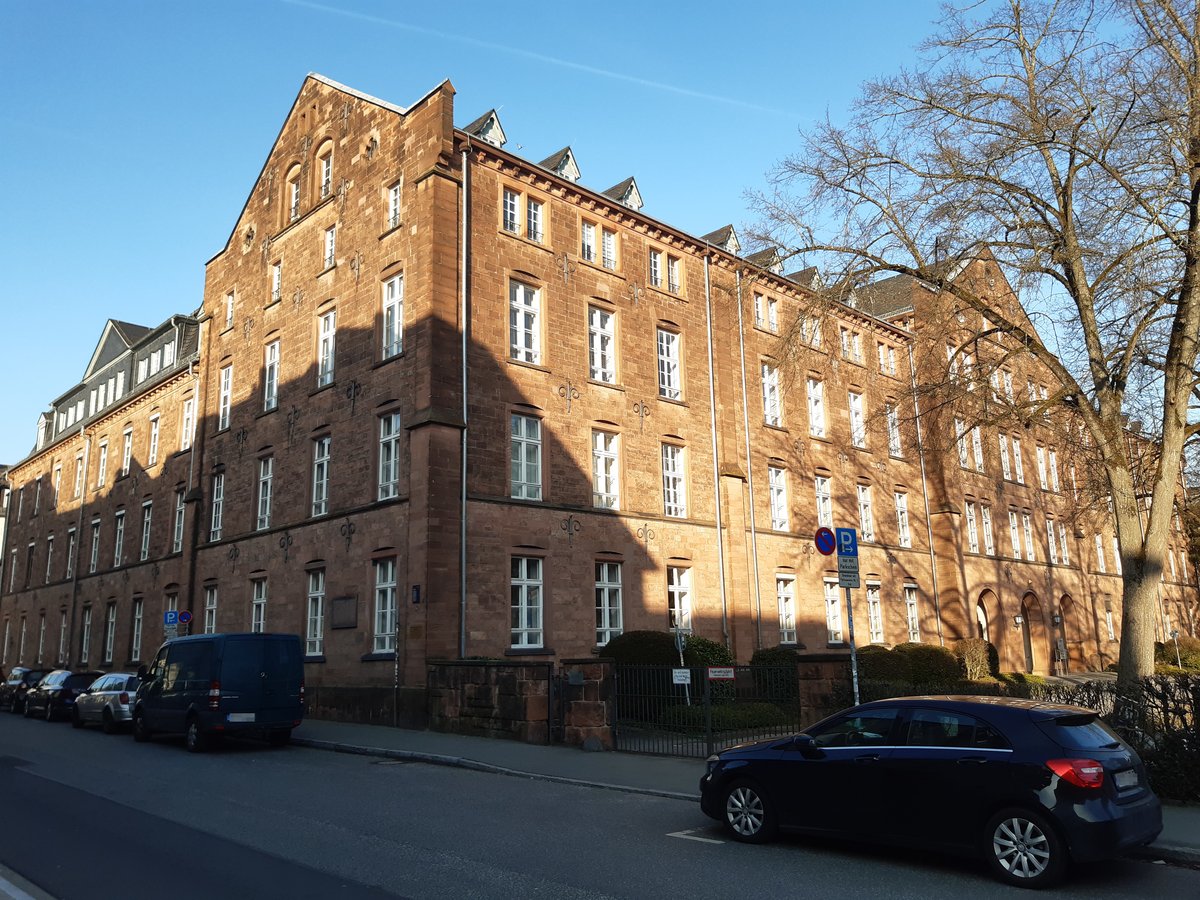
University of Marburg: Visiting Hours, Tickets, and Guide to Marburg’s Historical Sites
Date: 14/06/2025
Introduction
Philipps-Universität Marburg, founded in 1527 by Philip I, Landgrave of Hesse, is one of Germany’s oldest universities and the first established as a Protestant institution. Nestled in the medieval town of Marburg, it blends nearly five centuries of academic tradition, architectural splendor, and vibrant student life. The university’s legacy encompasses pivotal roles in the Protestant Reformation, contributions to philosophy, medicine, and sciences, and connections to figures such as the Brothers Grimm and Nobel laureate Emil von Behring. Today, with a diverse international community and a central role in Marburg’s cultural and social life, the university offers visitors a unique window into German history and academia.
Whether you are a history enthusiast, prospective student, or traveler, this comprehensive guide provides essential details on visiting hours, ticketing, accessibility, guided tours, travel tips, and key attractions. For updates and additional information, official resources such as the University of Marburg website, Marburg Tourism, and the Audiala app are invaluable.
Table of Contents
- Historical Overview
- Academic Significance and Modern Developments
- Visiting the University of Marburg
- Architectural Highlights & Photographic Spots
- FAQs
- Conclusion and Call to Action
- Reliable Sources
1. Historical Overview
Founding and Reformation Roots (1527–1600)
Established in 1527, the University of Marburg was the world’s first Protestant university. Its creation paralleled the Protestant Reformation, with initial faculties in theology, law, medicine, and philosophy. The university’s early years were shaped by religious transformations and academic innovation.
Confessional Conflicts and Growth (1600–1800)
Religious discord after Philip I’s death led to shifts in confessional alignment and the founding of a rival Lutheran institution in Giessen. The Thirty Years’ War disrupted academic life, but Marburg reaffirmed its Protestant identity, setting the stage for later growth.
Enlightenment and Academic Flourishing (18th–19th Century)
The Enlightenment era revived the university’s academic standing, attracting scholars such as Christian Wolff and Mikhail Lomonosov. The 19th century brought expansion, reforms, and the rise of influential alumni like jurist Friedrich Carl von Savigny and the Brothers Grimm. The university established the world’s first professorship in chemistry in 1609, and the construction of the iconic Alte Universität building (1874–1891) marked its architectural evolution. Emil von Behring’s Nobel Prize in Medicine (1901) highlighted Marburg’s scientific excellence.
20th Century: Challenges and Transformation
The university endured upheaval during the World Wars and the Nazi era, including academic purges and loss of scholars. The post-war period saw denazification, student activism, and curricular modernization, with Marburg emerging as a progressive academic center.
2. Academic Significance and Modern Developments
Today, Philipps-Universität Marburg serves around 25,000 students—12–14% of whom are international—and offers a diverse range of disciplines, particularly excelling in life sciences, chemistry, psychology, and Near and Middle Eastern studies. The campus is renowned for interdisciplinary research, gender studies, and its role in the EUPeace Alliance. The university’s influence extends to Marburg’s culture, economy, and urban identity, with the student population making up a significant portion of the city’s residents.
3. Visiting the University of Marburg
Visiting Hours and Tickets
- Alte Universität (Old University):
Open Tuesday–Sunday, 10:00–17:00; closed Mondays. Free admission; tickets may be required for special exhibitions. - University Museum of Cultural History (Marburg Castle):
Open daily, 11:00–17:00. Museum ticket: €5 (adults), discounts for students/seniors. Tickets are cash-only; no ATMs nearby. - Chemicum (Interactive Chemistry Museum):
Wednesday–Sunday, 10:00–16:00. Admission varies. - Other Museums and Collections:
Museum anatomicum, Religionskundliche Sammlung, and Ethnographische Sammlung are accessible during university hours (typically Mon–Fri, 9:00–15:00).
Always check the official university website or specific museum pages for up-to-date hours and fees.
Guided Tours and Events
- Guided Tours:
Weekly tours (including English-language options) are offered; advance booking is recommended via the visitor center or local tourist information. - Special Events:
The university hosts public lectures, exhibitions, and cultural festivals. Consult the events calendar before your visit.
Accessibility and Travel Tips
- Getting There:
Marburg is accessible by train and car, with the university within walking distance of the main station. Local buses (especially Bus 10) and taxis connect major university sites and the town. - Accessibility:
While Marburg’s cobblestone streets and hilly terrain can be challenging, most university buildings are wheelchair accessible. The city elevator eases access to upper parts of town, and ramps/elevators are present in key buildings (AngiesWeb). - Facilities:
Drinking water fountains, restrooms, and Wi-Fi are available across campus. The Welcome Center supports international visitors.
Nearby Attractions
- Marburg Castle (Landgrafenschloss):
Panoramic views and a museum featuring local history and art. - Old Botanical Garden:
Open daily, dawn to dusk; free entrance. The New Botanical Garden (Lahnberge) offers guided tours by appointment. - Elisabethkirche:
Open daily, 9:00–18:00. A Gothic landmark. - Historic Old Town (Altstadt):
Explore cobblestone streets, timber-framed houses, and vibrant cafés (22places.de, TravelWhoop). - Grimm Trail:
A walking route highlighting sites associated with the Brothers Grimm (Deutsche Märchenstraße).
4. Architectural Highlights & Photographic Spots
- Alte Universität & University Chapel:
Stunning Gothic Revival architecture and a beautifully preserved wooden ceiling. - Marburg Castle:
For panoramic city views and historic interiors. - Botanical Gardens:
Ideal for tranquil walks and photography of rare plants. - Lahn River Promenade & Oberstadt:
Picturesque settings for scenic photos, especially at sunrise or sunset. - Trojedamm or Hirsefeldsteg:
Great vantage points for cityscape shots.
5. Frequently Asked Questions (FAQs)
Q: What are the main visiting hours for university buildings?
A: Most are open weekdays from 8:00 to 18:00. Museums and special sites may have different hours—confirm in advance.
Q: Are there fees to enter university sites or museums?
A: Most buildings are free; some museums and special exhibitions charge modest fees (typically €3–5).
Q: Are guided tours available in English?
A: Yes, but availability varies—book in advance via the visitor center or university website.
Q: How accessible is the campus?
A: Most main sites are accessible, with city elevators and public transport supporting visitors with mobility challenges.
Q: Where can I find visitor amenities?
A: Drinking water, restrooms, and Wi-Fi are available throughout campus and the town. The Welcome Center provides maps and information.
6. Conclusion and Call to Action
Philipps-Universität Marburg is not only a seat of learning but a living monument of academic and cultural heritage, shaping the identity of Marburg for centuries. Visitors are invited to explore its historic buildings, world-class museums, and vibrant student scene. To maximize your visit:
- Plan ahead: Check official sites for opening hours and book guided tours as needed.
- Explore nearby attractions: Don’t miss the Marburg Castle, botanical gardens, and the Old Town.
- Use the Audiala app: For interactive maps, audio guides, and event updates.
- Engage with student life: Experience the unique atmosphere that makes Marburg a true university town.
Experience firsthand why “Other cities have a university—Marburg is a university.” For more information, visit the official university website and local tourism platforms.
7. Reliable Sources
- Philipps-Universität Marburg Official Site
- Marburg Tourism Information
- Audiala App - Your Guide to Marburg
- Study-in-Germany: Marburg
- 22places Marburg Travel Tips
- TravelWhoop: Top Things to See in Marburg
- Deutsche Märchenstraße: Marburg
- Speak Marburg: City Guide
- German Sights: Marburg
- Trip101: Best Things to Do in Marburg
- AngiesWeb: Marburg
- Military in Germany: Marburg
- University Welcome Center
- University Events Calendar
- EUPeace Alliance
Experience the heart of Marburg through its university—where tradition meets innovation, and history comes alive.
